14 Curious Facts About Portuguese Bullfighting
Categories: Europe | Holidays and Festivals
By Pictolic https://pictolic.com/article/14-curious-facts-about-portuguese-bullfighting1.htmlEvery year on August 14, in the Portuguese city of Abiul, the celebration of the birth of the Portuguese bullfight takes place, the main event of which is the bullfight itself in the old national traditions. Portuguese bullfighting is not just an ordinary competition, watching which you can pass the evening in the company of acquaintances and friends. This is a sociocultural phenomenon, an amazing combination of spectator sports and high art, in which only desperate daredevils participate.
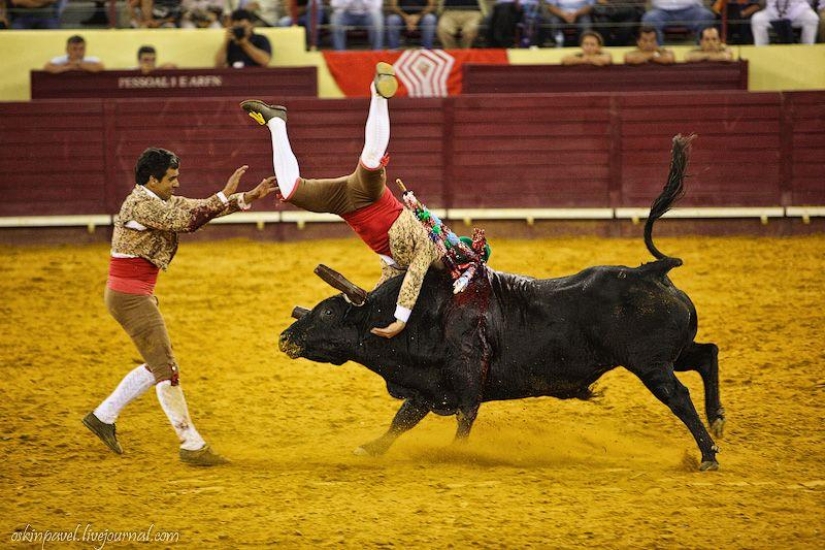
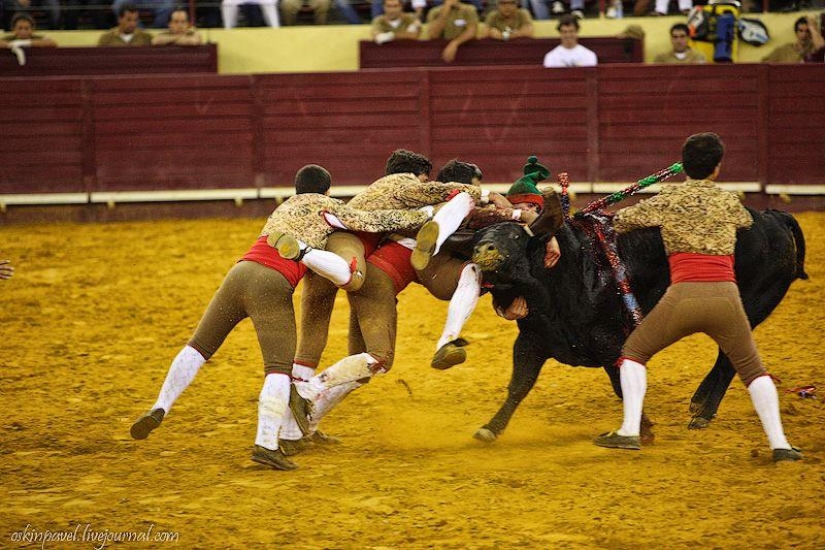
1. Portuguese bullfighting is different from Spanish bullfighting. Here is how one of the bullfighting participants describes the difference:
But the Portuguese bullfight is not only and not so much a duel. First of all, it is a daring challenge that a person throws to himself. This is a way to test yourself for strength, to know yourself better.
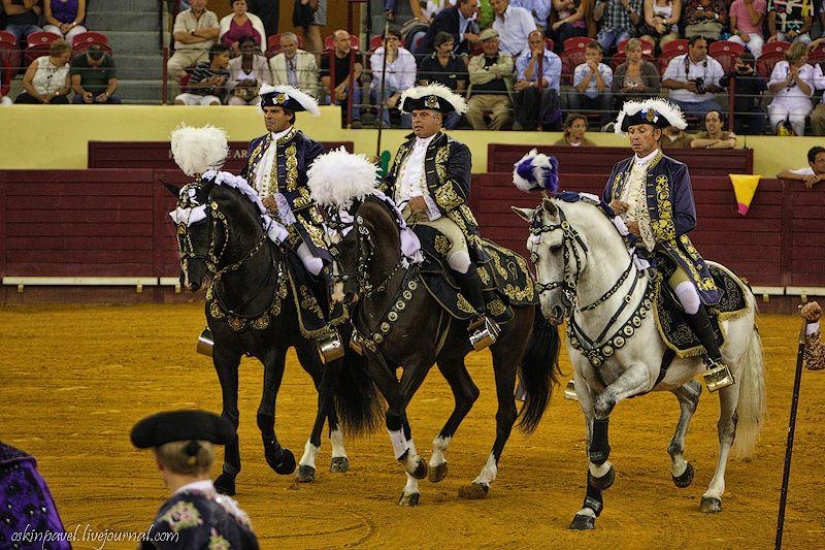
2. Bullfighting participants are divided into riders - caballeros and furkadush - foot fighters. In past centuries, only representatives of the aristocracy acted as cavaliers, and all furkados were commoners. Since then, the difference in their equipment has been preserved: the fourcades costumes are much more modest.

3. Prancing on horseback, the cavaliers stab the bull with sharp peaks (farps), inflaming it before the furkadush team leaves. Pikes are stuck into the subcutaneous fat bag at the withers of the bull and get stuck there. In terms of pain, this is comparable to a needle prick for a person.
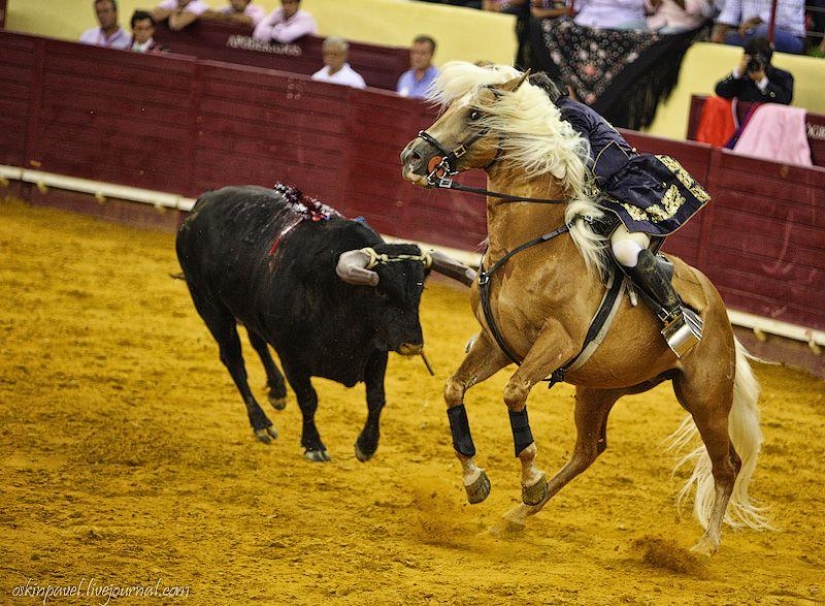
4. Ordinary horses at the sight of an angry bull behave unpredictably. Therefore, since the 18th century, only Lusitanian stallions, which have the most imperturbable character, have taken part in bullfighting. Such a horse costs a fortune, and caring for it is a whole science.

5. Only amateurs perform in the arena in Portugal. There are almost no professional furkados left in the country. None of the participants in the bullfight receives money - the Portuguese do it solely for their own pleasure. Someone lacks adrenaline in the blood, for someone the arena is a vocation, there are also hereditary fighters. In Portugal, the fourcados dynasties are still preserved.
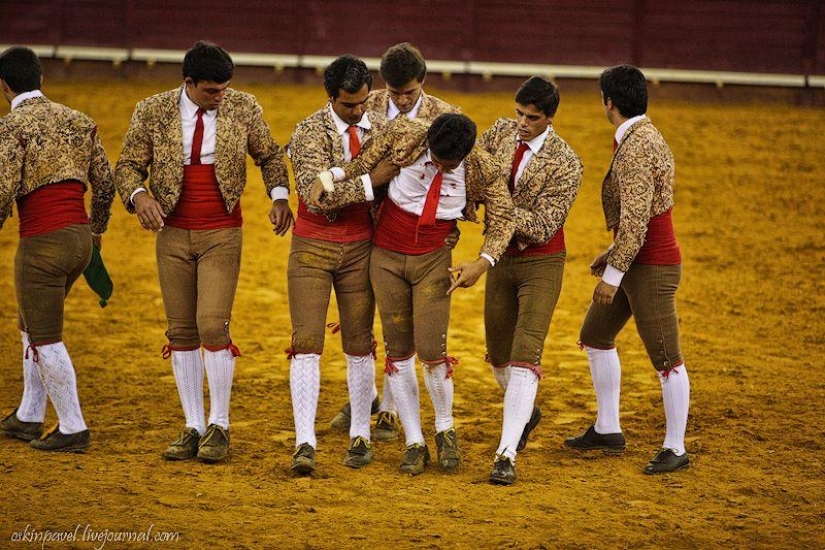
6. From time immemorial in Portugal, there are clear age limits for bullfighting participants. The youngest fighters are called "infantish", which means "babies". This group includes boys between the ages of 10 and 14 who oppose young bulls. The next group is juveniles, or teenagers. It brings together young men from 14 to 18 years old. The main age group is from 18 to 35. Although 35 is a conditional limit, some enter the arena even at 45, if health permits.
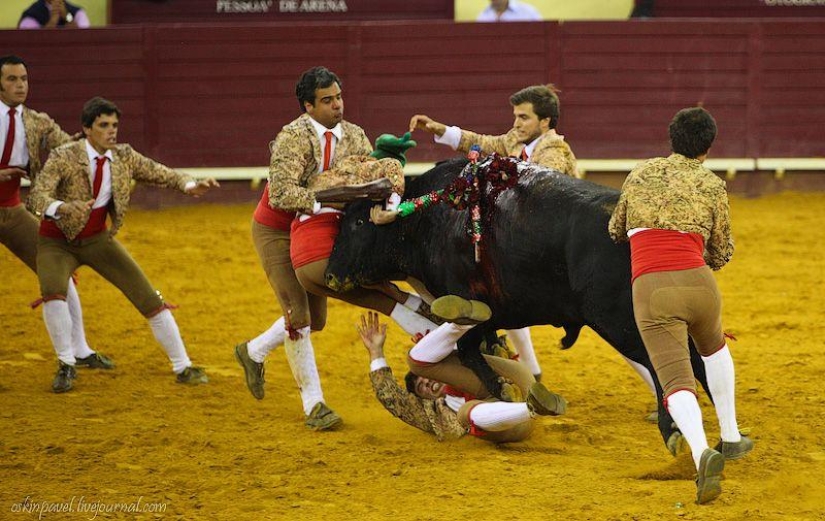
7. An obligatory element of the Portuguese bullfight: it begins with a long, exhausting workout. Training usually lasts one and a half to two hours. Several teams participate in it, each with eight people.
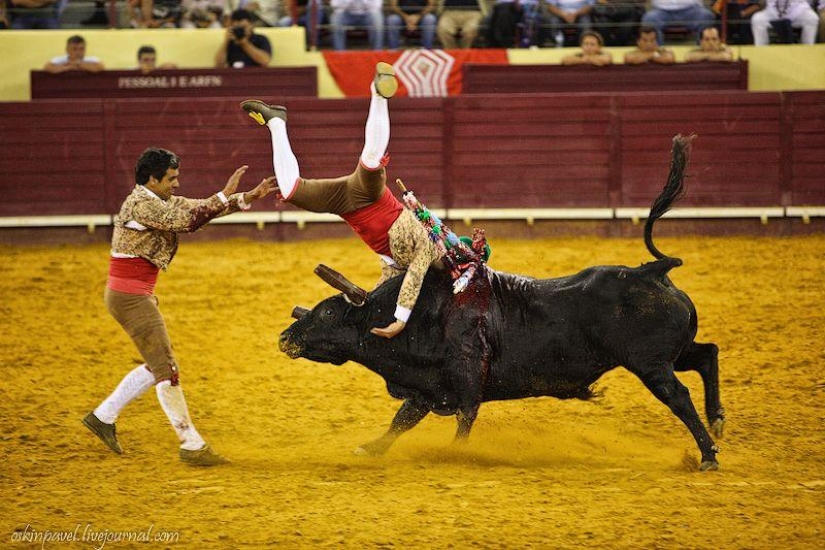
8. Each figure eight has a clear organization. While some provoke the bull to contact and take the brunt, the other must hold the animal by the tail. The functions in the team are distributed by the “senior furkadush”, whose orders are not subject to discussion. For each of the fighters, he is a coach, an older brother and a guardian angel all rolled into one.

9. The scheme is very simple: the most desperate fighter comes out against the most formidable beast.

10. The age of the bulls participating in bullfighting is three to four years, weight is five hundred to six hundred kilograms.
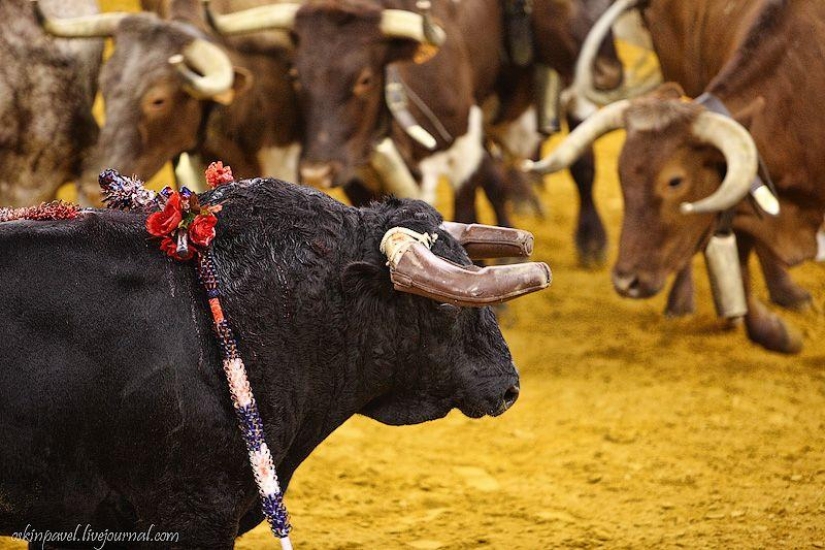
11. Bullfighting is phenomenally popular with the Portuguese, so the stands are never empty. But bullfighting is especially popular, oddly enough, among girls: being a girlfriend of fourcades is the dream of every young Portuguese woman.
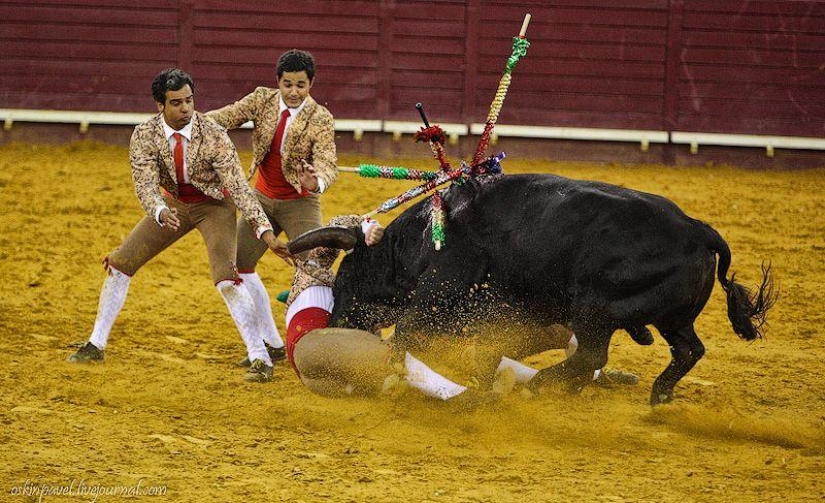
12. And before the start of training, and before the bullfight itself, special leather covers are put on the horns of the animal - they soften the blow. But the covers will not save furkadush if he makes at least one wrong move. To participate in a bullfight, courage alone is not enough - you will also need composure, good eyesight and coordination of movements.
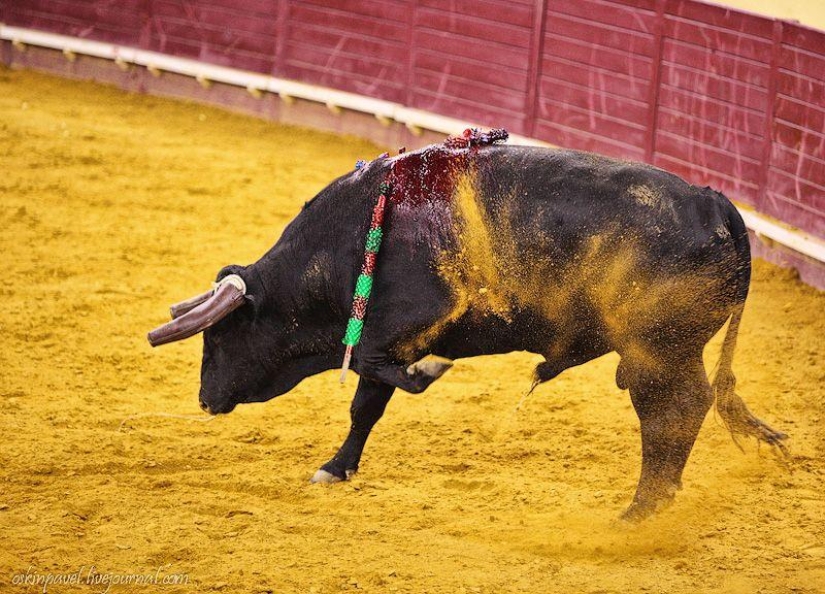
13. Each fourcudos must have two ties for performances. One is black, the other is red. Red is for every day. Black is worn only in case of mourning, when one of the friends or relatives dies.
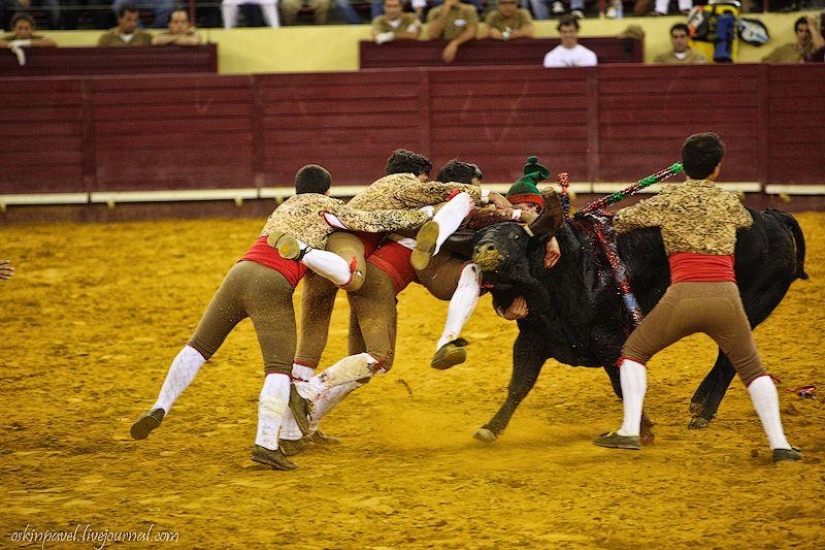
14. Bulls, contrary to popular belief, at the end of the bullfight are not sent to the slaughterhouse, but are returned to the corrals. Compared to all other bullfights, the Portuguese one is the least bloodthirsty.
Recent articles

In Ancient Egypt, gods were revered, pharaohs were glorified, and majestic tombs were built. The builders of royal tombs were ...

Whether you are a tourist or a professional photographer, in both cases Lapland is a truly magical place. There is not only a very ...

Why should a coffin be a boring box if it can be ordered in the form of a lobster, fruit, bird or shoe? Residents of the African ...